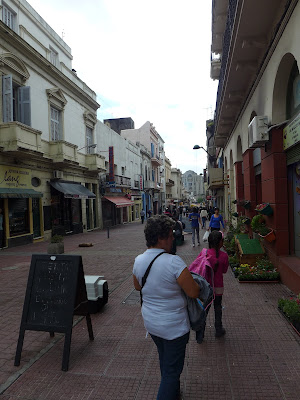Even though we've mostly been picking up the same ingredients that we do back home, there are a few things here that are just a bit different than back in the States.
Bon-bons
Although these little pieces of chocolate are referenced in songs and television shows all of the time, I'd never eaten one... until Argentina.
Man oh man. We put two in our cart one day out of curiosity and we've quickly become addicted to these little guys. Plus, they're about 20 cents each. Amazing.
Pate
We'd never eaten pate and don't fully understand what it is (please don't tell us), but we met some friends on the road who raved about it. We've been eating it as a snack on long bus rides, and in between meals. [Update: We are officially sick of pate. That addiction lasted about 3 weeks.]
Zucchini-pumpkins
Okay, that's not the real name of these pumpkin-shaped squashes, but it should be. These taste like a mixture of zucchini and eggplant, and look like a green pumpkin. They're great grilled, but we've been putting them in almost everything.
Purple Sweet Potatoes
They're not quite as sweet as the kind we're used to back home, but that makes them more versatile. We throw these in soups, veggie stir-fries, and eat them on their own.
Dulce de Leche
We haven't actually purchased this in the grocery store because we get it for free with our breakfast nearly every day. But if we did want to purchase it, we'd have to think very carefully because the selection is immense:
| Yes, these are all tubs of dulce de leche. |
Wine
This is cheating; we buy wine quite often at home, too. But rarely do we have dozens of choices for great wine, all between $3 - $5 U.S. per bottle.
Store-brand Cheese Puffs
These are better than any kind of cheese puff in the U.S. No contest.
Still, there are things from back home that we're craving. This list is by no means comprehensive.
- Kale. I miss you, you versatile leaf!
- Franks hot sauce. The picante sauce here just can't replace you. My addiction just will not die.
- Greek yogurt. Apparently this just hadn't made it down to Argentina yet.
- Salsa. I've only seen this in one store, and it was incredibly expensive.
- Peanut butter. I guess it's true that the rest of the world just doesn't understand the usefulness of peanut butter. I especially missed this during big hikes.
-R
-R







































